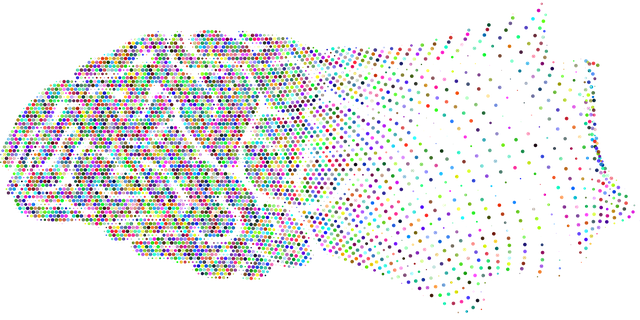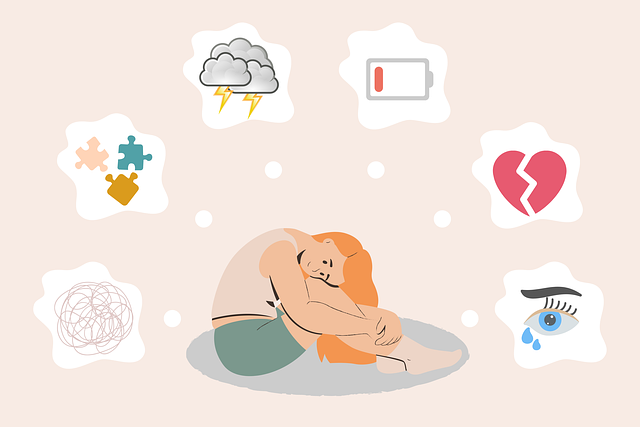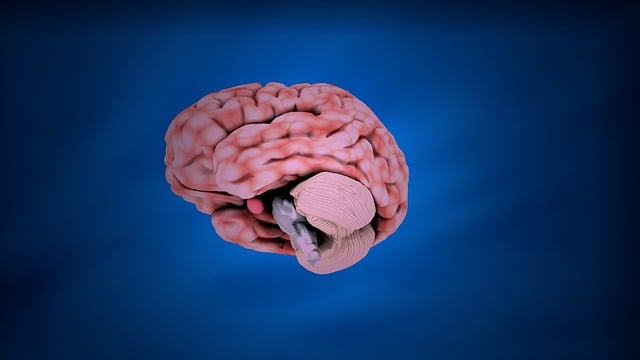Lone Tree Panic Disorder (LTPD) and anxiety attacks pose significant threats to emotional well-being, with symptoms like rapid heartbeat and shortness of breath during intense panic episodes. Effective therapy, including cognitive-behavioral therapy (CBT) and exposure therapy, is crucial for managing LTPD. Crisis intervention strategies focus on immediate stabilization and prevention of escalation, emphasizing safe environments, active listening, and Cultural Competency Training for healthcare providers. CBT, integrating Mind Over Matter principles, self-awareness exercises, and compassion cultivation practices, effectively treats LTPD and anxiety attacks by challenging negative thought patterns, cultivating empathy, and promoting proactive anxiety management.
In today’s fast-paced world, understanding and addressing anxiety disorders like Lone Tree Panic Disorder and Anxiety Attacks is more crucial than ever. This comprehensive guide explores effective crisis intervention strategies for providing immediate support. We delve into therapy approaches tailored to overcome these conditions, offering a roadmap for both professionals and individuals seeking guidance. By equipping ourselves with the right tools, we can make a significant impact in mitigating symptoms and enhancing well-being.
- Understanding Lone Tree Panic Disorder and Anxiety Attacks
- Crisis Intervention Strategies for Effective Support
- Therapy Approaches to Overcome Anxiety Disorders
Understanding Lone Tree Panic Disorder and Anxiety Attacks

Lone Tree Panic Disorder (LTPD) and Anxiety Attacks represent a significant challenge to emotional well-being. LTPD, characterized by sudden, intense, and recurrent panic episodes often felt in isolated or remote locations, can leave individuals feeling helpless and isolated. These attacks, which may include symptoms like rapid heartbeat, sweating, and shortness of breath, can be debilitating. Therapy plays a pivotal role in managing LTPD, focusing on techniques such as cognitive-behavioral therapy (CBT) to help individuals recognize and reframe anxious thoughts, and exposure therapy to gradually confront feared locations or situations.
Burnout prevention and emotional well-being promotion techniques are integral aspects of addressing LTPD. Developing inner strength is crucial; mindfulness practices, for instance, can equip individuals with tools to manage stress and anxiety. By fostering resilience and self-awareness, these strategies not only help in managing acute attacks but also support long-term emotional stability and overall mental health.
Crisis Intervention Strategies for Effective Support

In moments of crisis, whether it’s an acute anxiety attack or a panic disorder like Lone Tree Panic Disorder, effective support is paramount. Crisis intervention strategies are designed to provide immediate and targeted assistance, aiming to stabilize individuals and prevent further escalation. The first step in this process involves creating a safe and non-judgmental environment, fostering open communication where the individual feels heard and understood. This foundation is crucial for building trust with the healthcare provider, ensuring personalized care that addresses both physical and emotional needs.
A comprehensive crisis intervention strategy incorporates elements like active listening, empathy, and tailored interventions. Healthcare providers play a pivotal role here, benefiting from Cultural Competency Training to offer sensitive support. This training equips professionals with skills to navigate diverse cultural backgrounds, ensuring every individual receives respectful and effective therapy for conditions like Anxiety Attacks. Crisis Intervention Guidance emphasizes rapid assessment and appropriate resource allocation, be it through counseling sessions, medication management, or signposting to specialized depression prevention programs.
Therapy Approaches to Overcome Anxiety Disorders

Anxiety disorders, particularly Lone Tree Panic Disorder and Anxiety Attacks, can be effectively managed through various therapy approaches. One prominent method is cognitive-behavioral therapy (CBT), which focuses on identifying and changing unhelpful thought patterns and behaviors contributing to anxiety. CBT empowers individuals to challenge negative beliefs and develop healthier coping strategies, thereby reducing the frequency and intensity of panic attacks.
Integrating Mind Over Matter principles alongside traditional therapy can significantly enhance treatment outcomes. Self-Awareness Exercises and Compassion Cultivation Practices play a crucial role in this process. By cultivating self-awareness, individuals gain a deeper understanding of their triggers and emotional responses, enabling them to proactively manage anxiety. Compassion cultivation helps foster empathy towards oneself and others, reducing the severity of symptoms associated with Lone Tree Panic Disorder.
In addressing Lone Tree Panic Disorder and Anxiety Attacks, crisis intervention strategies play a pivotal role in providing effective support. This article has explored both practical approaches and therapy methods to overcome anxiety disorders. By understanding the nuances of Lone Tree Panic Disorder and utilizing evidence-based interventions, individuals can find relief and regain control over their lives. Continued research and access to quality therapy are essential to enhancing these intervention strategies, ultimately fostering a healthier and more supportive environment for those affected by these conditions.














